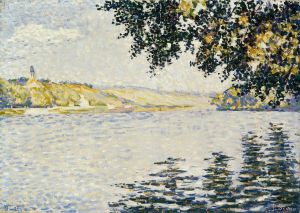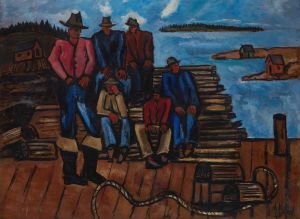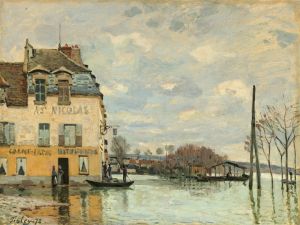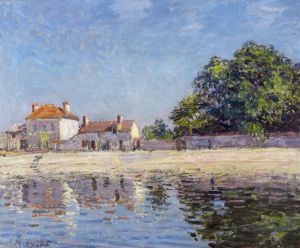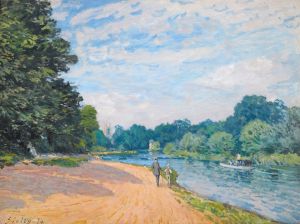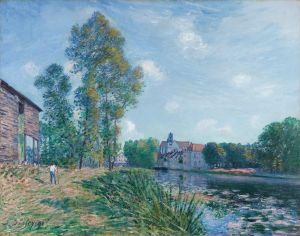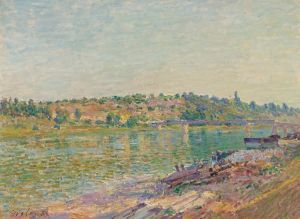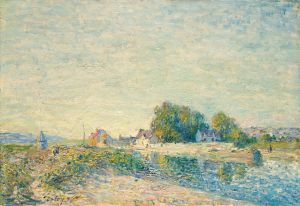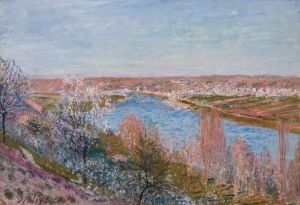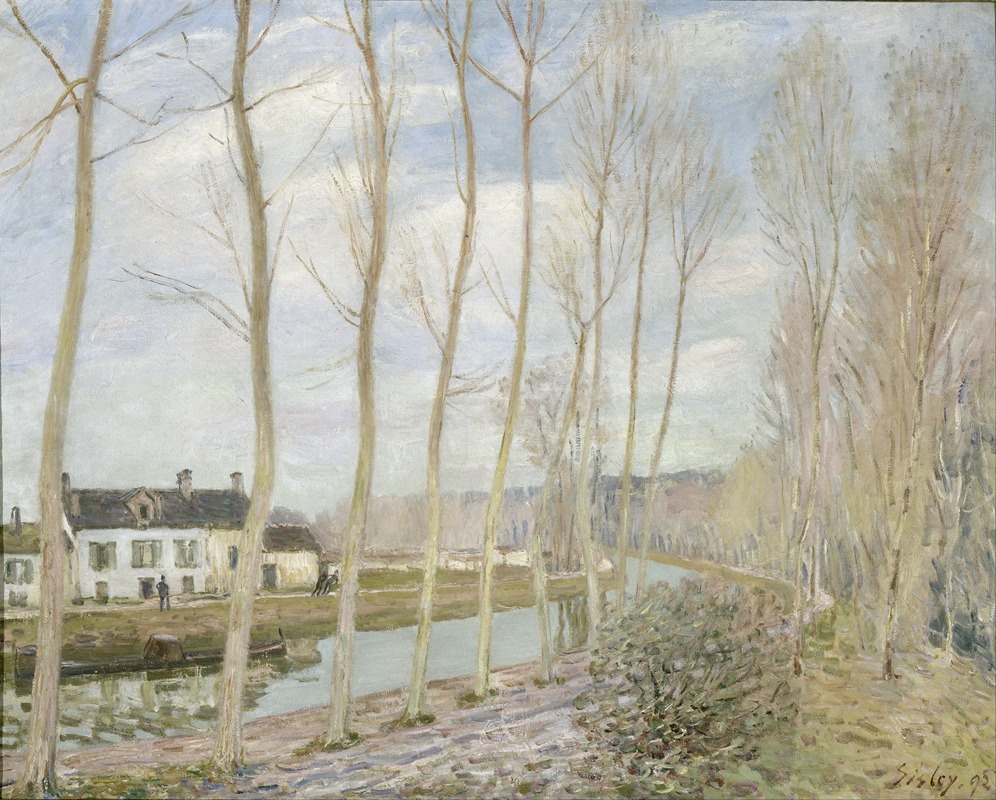
The Loing’s Canal
A hand-painted replica of Alfred Sisley’s masterpiece The Loing’s Canal, meticulously crafted by professional artists to capture the true essence of the original. Each piece is created with museum-quality canvas and rare mineral pigments, carefully painted by experienced artists with delicate brushstrokes and rich, layered colors to perfectly recreate the texture of the original artwork. Unlike machine-printed reproductions, this hand-painted version brings the painting to life, infused with the artist’s emotions and skill in every stroke. Whether for personal collection or home decoration, it instantly elevates the artistic atmosphere of any space.
Alfred Sisley, a prominent figure in the Impressionist movement, painted The Loing’s Canal in 1892. This artwork is one of Sisley’s many depictions of the French countryside, showcasing his dedication to capturing the natural beauty of rural landscapes. The painting illustrates a serene view of the Loing Canal, located in the Île-de-France region near Moret-sur-Loing, where Sisley spent the later years of his life.
The Loing Canal, a man-made waterway, was constructed in the 18th century to facilitate transportation and trade. By the time Sisley painted this scene, the canal had become an integral part of the local landscape, blending harmoniously with the surrounding natural environment. Sisley’s choice of this subject reflects his interest in portraying the interplay between human-made structures and nature, a recurring theme in his work.
In The Loing’s Canal, Sisley employs his characteristic Impressionist techniques, including loose brushstrokes and a focus on the effects of light and atmosphere. The painting captures the tranquil waters of the canal, bordered by lush greenery and trees, with a soft, diffused light that suggests a calm day. The composition draws the viewer’s eye along the canal, creating a sense of depth and inviting contemplation of the peaceful rural setting.
Sisley’s works, including The Loing’s Canal, are celebrated for their ability to convey the ephemeral qualities of light and weather. His dedication to painting en plein air (outdoors) allowed him to observe and depict the changing conditions of the natural world with great sensitivity. This approach aligns with the broader goals of the Impressionist movement, which sought to break away from the rigid formalism of academic art and instead focus on capturing the immediacy of everyday life.
Today, The Loing’s Canal is recognized as an exemplary work of Sisley’s mature period, reflecting his mastery of landscape painting and his deep connection to the French countryside. The painting is housed in a public or private collection, though specific details about its current location may vary. Sisley’s contributions to Impressionism continue to be celebrated, and his works remain a testament to his skill in portraying the quiet beauty of nature.





